Free Museums in Winnipeg, Manitoba
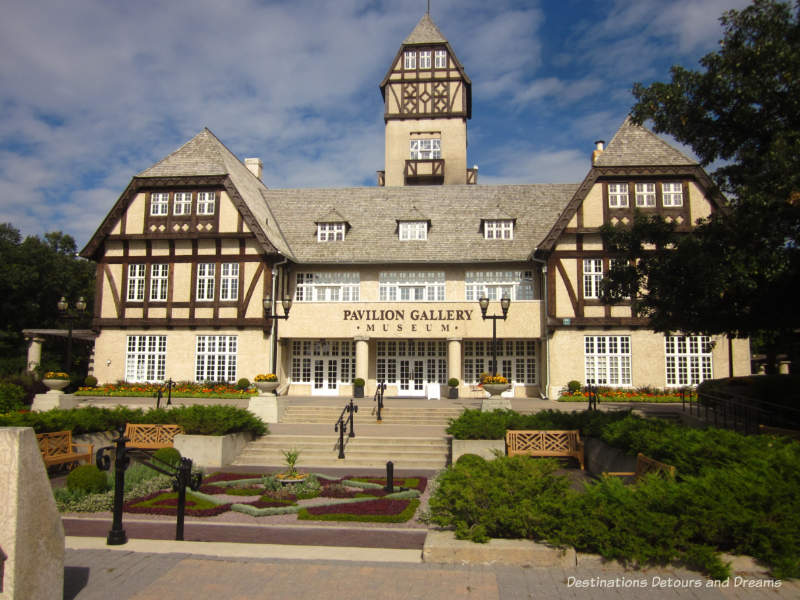
Free or entrance by donation museums in Winnipeg, Manitoba, Canada
Winnipeg, Manitoba has great museums. Any article highlighting the “must-see” attractions of the city is sure to list the Canadian Museum for Human Rights. The Manitoba Museum, the Saint-Boniface Museum, and the Winnipeg Art Gallery are also deservedly popular. But the list of museums in this prairie city doesn’t end there. Many of the other museums have no admission charge, offering free entry or entry by donation. These museums vary in size and focus, covering art, special interest subjects, local history and more.
Table of Contents
1. Winnipeg Police Museum
2. Living Prairie Museum
3. Naval Museum of Manitoba
4. Upper Fort Garry Provincial Park
5. Pavilion Art Gallery and Pooh Gallery
6. St. Vital Museum
7. Transcona Museum
8. Charleswood Museum
9. Winnipeg Firefighters Museum
10. St. Norbert Provincial Heritage Park
11. Seven Oaks House Museum
12. Ross House
13. Grant’s Old Mill Museum
14. La Maison des Artistes Visuels Francophones
15. Plug In Institute of Contemporary Art
16. Salisbury House
17. University Galleries
18. Costume Museum of Canada
19. Marion and Ed Vickar Jewish Museum of Western Canada
Winnipeg Police Museum
Through a collection of artifacts, uniformed mannequins, old photographs, newspaper clippings, artwork, and written information, the Winnipeg Police Museum tells the story of policing in Winnipeg since the force’s creation in 1874. Artifacts include a gun collection, handcuffs, speed enforcement tools, full-size vehicles, and more.
The Winnipeg Police Force’s history includes a number of innovations and firsts. You’ll see the call boxes introduced in 1913, the switchboard from North America’s first three-digit emergency telephone system, and a police dog protective vest. Displays cover historical events in the city, such as the 1919 General Strike. The history of women in the police force reflects society’s changing attitudes about the roles of women.
You can read more in my post Policing and Social History at Winnipeg Police Museum. Note that the museum and, in particular, its three-digit emergency telephone system, are featured in my book 111 Places in Winnipeg That You Must Not Miss.
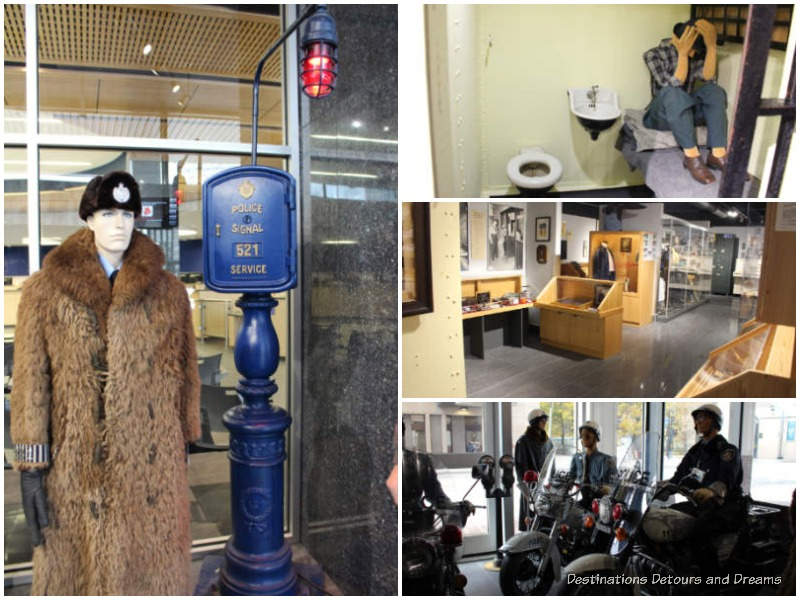
The Winnipeg Police Museum is located at Winnipeg Police Headquarters on Smith Street in downtown Winnipeg. The museum is open 10 am to 3 pm Tuesday through Friday.
Living Prairie Museum
Tall grass prairie once covered much of central North America, including the area where the city of Winnipeg now sits. Today, very little tall grass prairie remains. Living Prairie Museum is a thirteen-hectare tall grass prairie preserve within city boundaries where you’ll find over 150 species of wildflowers, grasses, and shrubs. An interpretative guide provides information as you take a self-guided walk on a trail through the preserve. Read more in my post Tall Grass Prairie Preserve Living Prairie Museum in Winnipeg, Canada. Note that the Living Prairie Museum is one of the places featured in my book 111 Places in Winnipeg That You Must Not Miss.
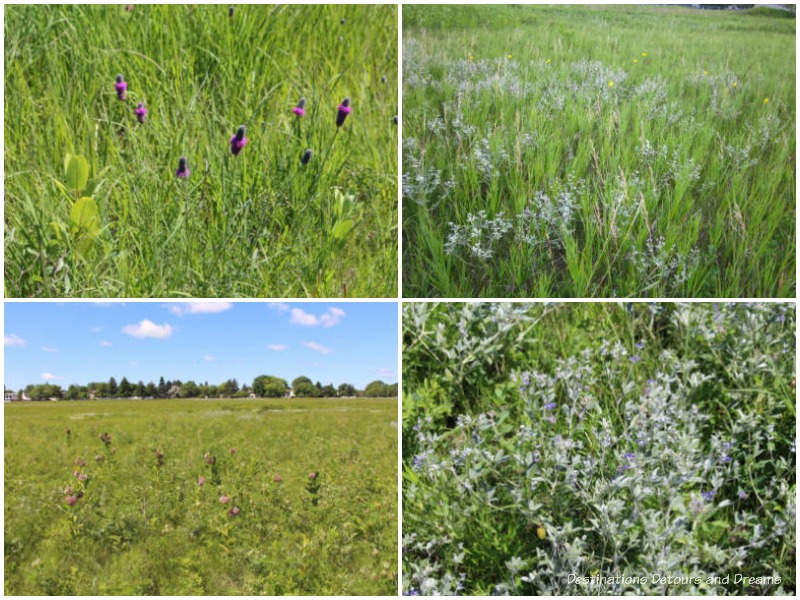
An Interpretive Centre provides further information about the prairie ecosystem. You are welcome to walk the trail anytime from dawn to dusk whether the Interpretative Centre is open or not. The Centre is open regularly during summer months and for special events during the winter. Check the museum’s website for hours. Special talks, educational events, and workshops are held throughout the year.
Naval Museum of Manitoba
Winnipeg is in the middle of the prairies, 1,000 kilometres away from the nearest ocean, the Arctic Ocean. Driving distance to either the Pacific or the Atlantic Ocean is over 2,000 kilometres. So, you might not expect to find a Naval Museum. However, the Canadian Navy has deep roots in Manitoba. For some unexplained reason, ever since the creation of the Royal Canadian Navy in 1910, recruiting has done well on the prairies. A Reserve Division was created in 1923. Winnipeg Naval Reserve Division became an important recruiting and training facility during World War II.
The Naval Museum of Manitoba contains information about the Reserve and a variety of naval artifacts, including models of ships, uniforms, guns, and sailors’ supplies and tools. The Naval Museum of Manitoba is one of the places featured in my book 111 Places in Winnipeg That You Must Not Miss.
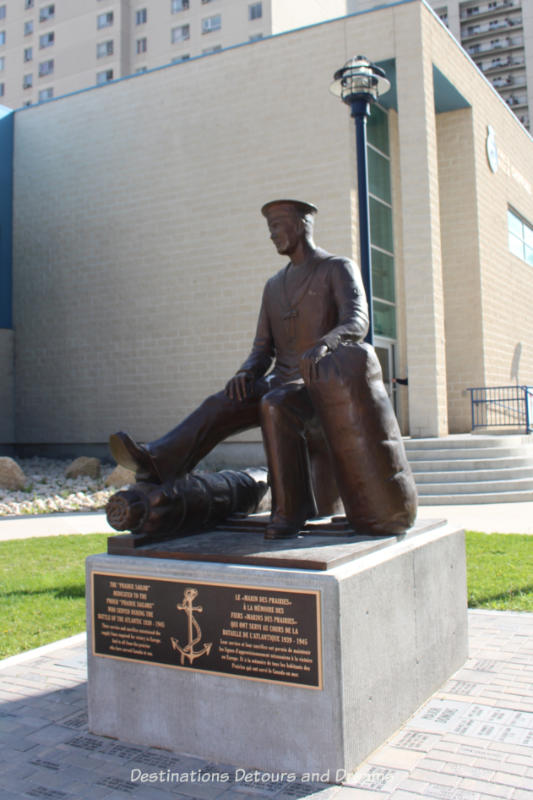
The Naval Museum of Manitoba is located inside the HMCS Chippawa Building, the headquarters of the Reserve Division. It is generally open Wednesdays between the hours of 9 am and 3 pm. Check the website to confirm hours. When you enter the building through the south door, you need to buzz the museum to gain access.
Upper Fort Garry Provincial Park
Upper Fort Garry Provincial Park is a combination of park, sculpture, and technology that showcases the history of what was once a major fur trading post and of the city of Winnipeg itself. It is located where the original Fort Gibraltar was built by the North West Company in 1806. All that remains of the old fort is a stone and wood gate dating to the 1850s, but strategically placed garden beds and a long engraved and animated wall of weathering steel tell the story of the fort and its strategic importance in Manitoba’s history. The Manitoba Liquor and Lotteries Heritage Wall features a sound and light show. Read more in my post Manitoba History at Upper Fort Garry. Note that Upper Fort Garry’s Heritage Wall is one of the places in my book 111 Places in Winnipeg That You Must Not Miss.
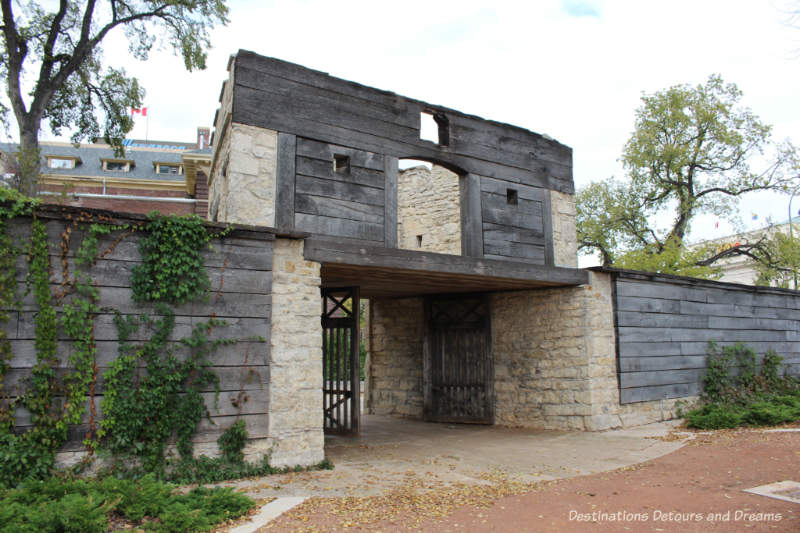
Upper Fort Garry Provincial Park is located in downtown Winnipeg at the corner of Broadway and Main. The park is always open. Check the park’s website for Heritage Wall The sound and light show times.
Pavilion Art Gallery and Pooh Gallery
The Pavilion at Assiniboine Park has been presenting free art exhibitions since 1998, primarily featuring the works of renowned Manitoba artists Ivan Eyre, Walter J. Philips, Leo Mol and Clarence Tillenius. Since 2016, exhibits have been curated by the Winnipeg Art Gallery, Canada’s oldest civic art gallery. There are three galleries dedicated to exhibits.
A fourth gallery contains a permanent exhibit on Winnie the Pooh. The inspiration for A.A. Milne’s Winnie the Pooh books was a bear in London Zoo. The bear came from Canada, where he had belonged to Lieutenant Harry Colebourn, who had named him Winnie after his home town of Winnipeg. During World War I, when Colebourn’s regiment shipped to England, Winnie went too. When Colebourn was sent to France, he donated Winnie to the zoo.
Information about Winnie and A.A. Milne as well as Winnie the Pooh books, drawings and illustrations can be found in the Pooh Gallery. The Pooh Gallery is one of the places featured in my book 111 Places in Winnipeg That You Must Not Miss. For more about the Pooh and Winnipeg connection, read my post Winnie-the-Pooh in Winnipeg.
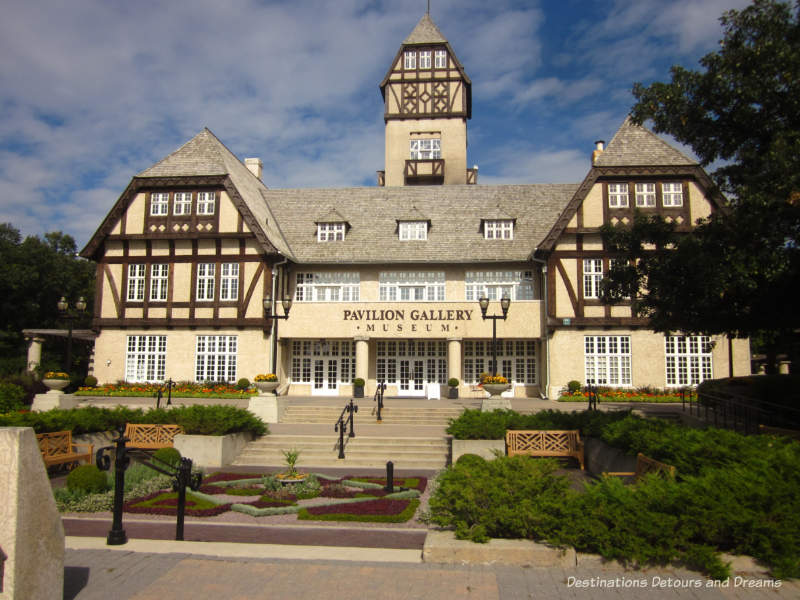
The Pavilion Gallery is open daily from 9:00 am to 4:00 pm in winter months, daily from 9:00 am to 5:00 pm in summer months.
St. Vital Museum
As Winnipeg grew, communities that had formed around the outskirts gradually became part of a larger metropolitan area. In 1972, twelve such municipalities amalgamated with Winnipeg as one city. Many neighbourhoods in Winnipeg are still known by the community name. A few have community museums. The St. Vital Museum is one such community museum.
The community of St. Vital dates back to the 1820s. The St. Vital Museum is located inside the former St. Vital Fire Station. When the building was constructed in 1914, it housed both the St. Vital Police and Fire departments. The museum displays a variety of artifacts, including household items, decorative arts, signs, furnishings, old records and more.
Although the items in the museum will connect with someone who has a personal connection to St. Vital and its past, there are enough items of general historical interest for other visitors. There is a significant focus on St. Vital rock musicians and a collection of the Guess Who’s Gold Records. Those Gold Records are featured in my book 111 Places in Winnipeg That You Must Not Miss.
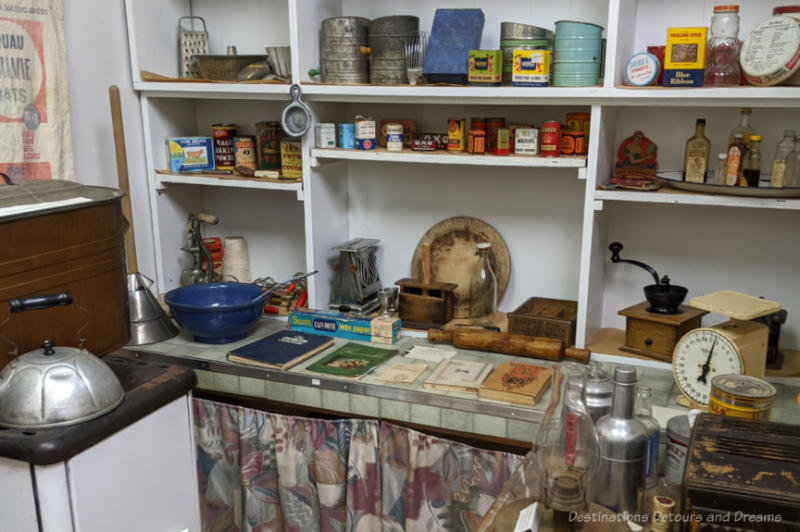
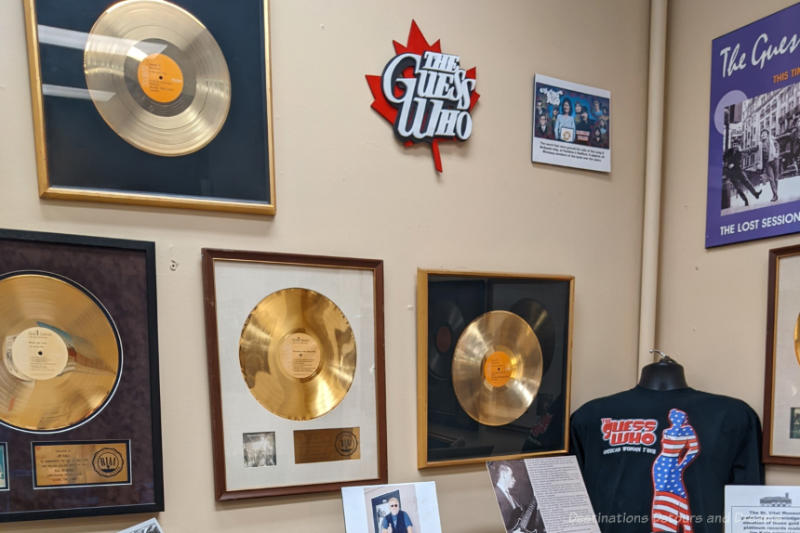
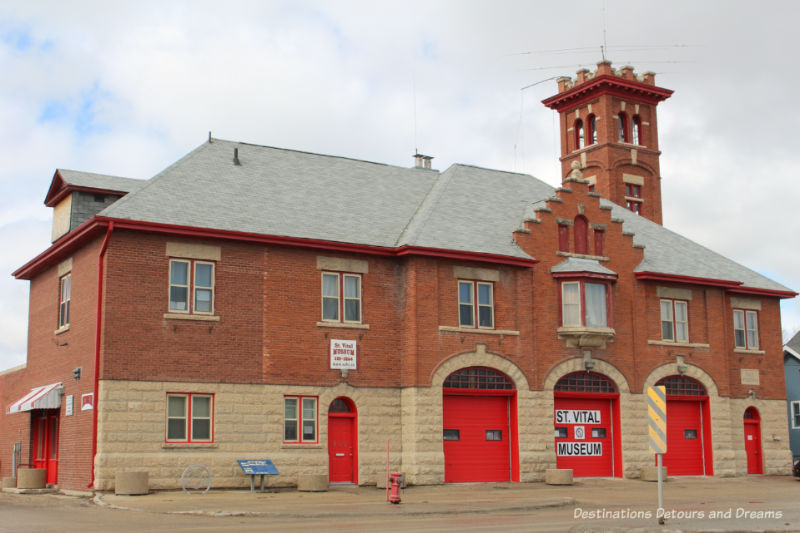
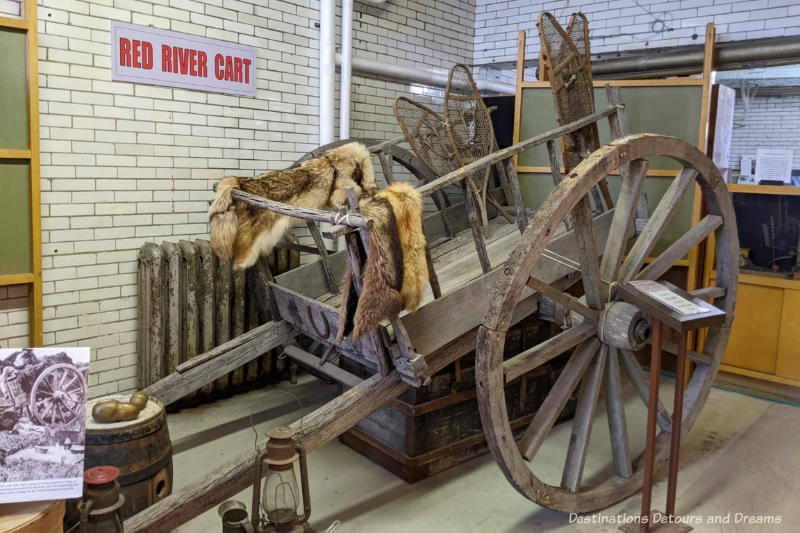
The St. Vital Museum is run by volunteers and typically open Saturdays and/or Wednesdays. Check hours on the museum’s website.
Transcona Museum
The city of Transcona was another community that became part of Winnipeg in 1972. The city developed after the Grand Trunk Pacific Railway purchased land in the area in 1907 and built railway repair shops to service steam locomotives and railway cars. The Canadian National Railway is still a major employer.
The railway history and its impact on the community is a significant part of the Transcona Museum, but it is not all there is at the museum. The museum’s collection includes documents and photographs, over 4,000 community-based artifacts, 900 clothing and textile items, archaeological artifacts, and natural history artifacts, including 8,000 butterfly and moth specimens. The museum changes its exhibits on a yearly basis.
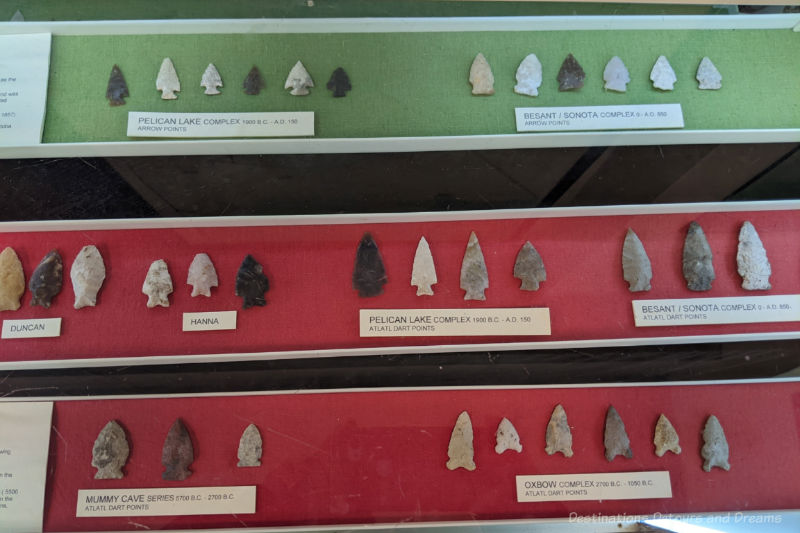
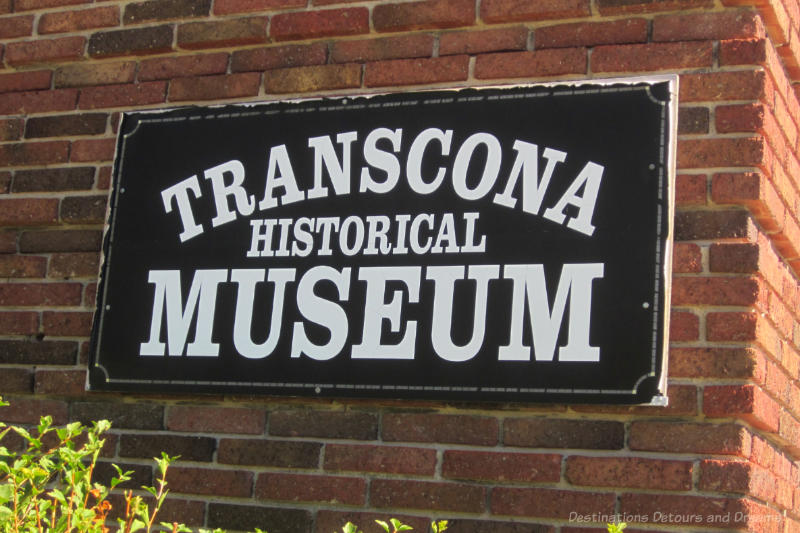
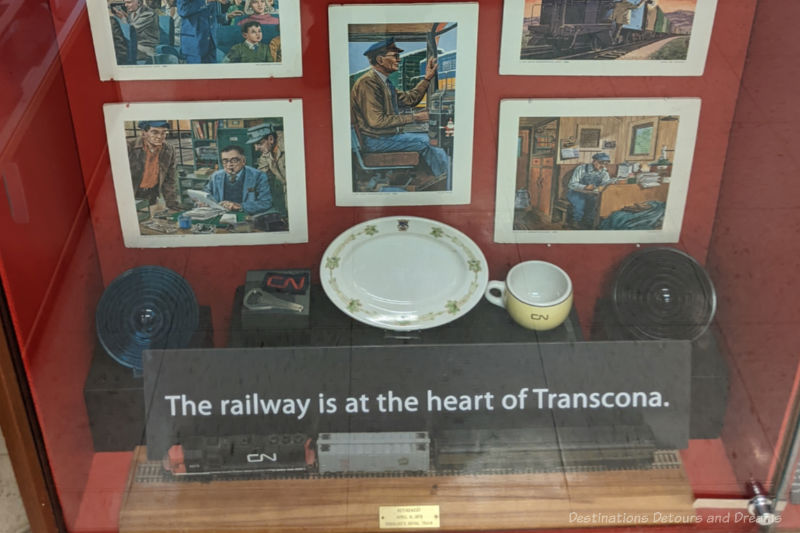
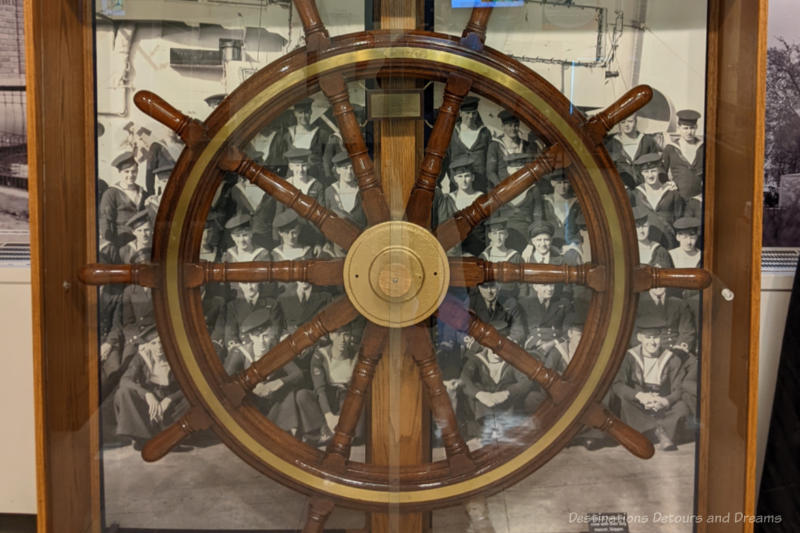
The museum is open year-round, except for the few weeks it closed after Manitoba’s school spring break to change its exhibits. Check the museum website for exact days and hours.
Charleswood Museum
Charleswood is a Winnipeg neighbourhood located in the southwestern end of the city. In the 19th century, it was the location of “The Passage”, a natural ford across the Assiniboine River frequently used by bison hunters. It became part of the R.M. of Assiniboia in 1880 when the province of Manitoba was created. The R.M. of Charleswood was created as a separate entity in 1913. In 1972, the rural municipality merged with the City of Winnipeg. The small Charleswood Museum contains artifacts, pictures, and memorabilia from days gone by. It is open Saturdays from 2:00 to 4:00 p.m.
Winnipeg Firefighters Museum
Housed in a former fire station, the two floors of the Winnipeg Firefighters Museum contain an impressive collection of antique vehicles, fire-fighting apparatus, and memorabilia. The collection gives insight into Winnipeg’s fire-fighting history.
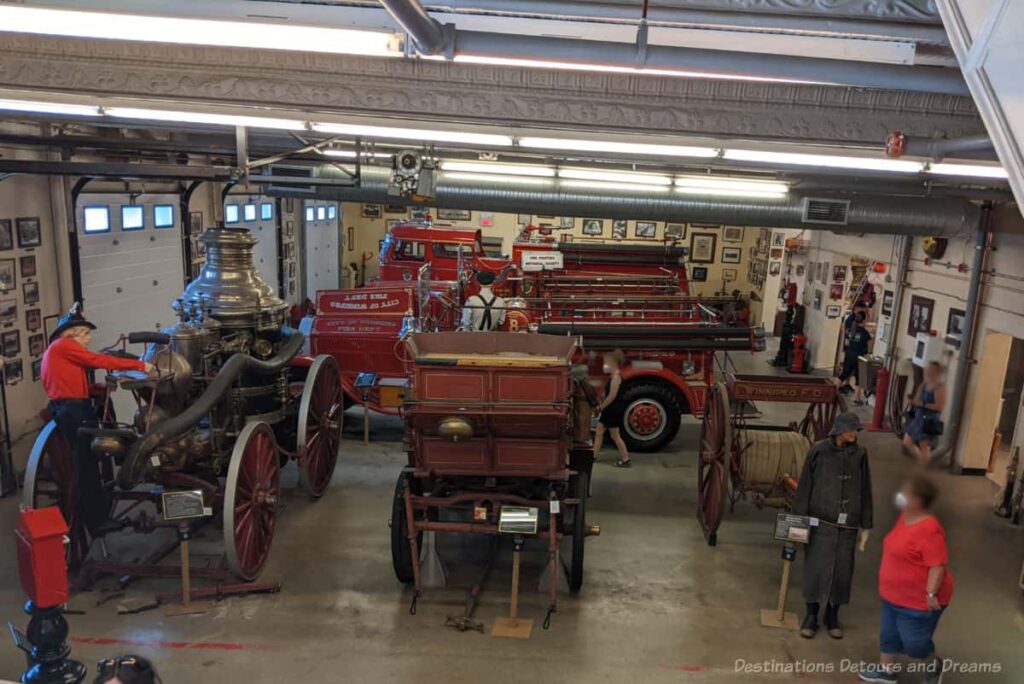
Run by the Winnipeg Firefighters Historical Society, the museum is open on Sundays from 10am to 2pm. Admission is donation based.
St. Norbert Provincial Heritage Park
The St. Norbert Provincial Heritage Park lies at the south end of Winnipeg where the La Salle River flows into the Red River. On display in the park are 19th century log homes and exhibits illustrating the evolution of the community through Métis settlement and the immigration of Québec families. The Turenne and Bohémier houses are restored to recreate the lifestyles of the families who lived there. The Turenne house represents a time period in the late 1800s, the Bohémier house the time period of 1906 to 1912. You can read more about it in my post St. Norbert Provincial Heritage Park. The park is one of the places featured in my book 111 Places in Winnipeg That You Must Not Miss.
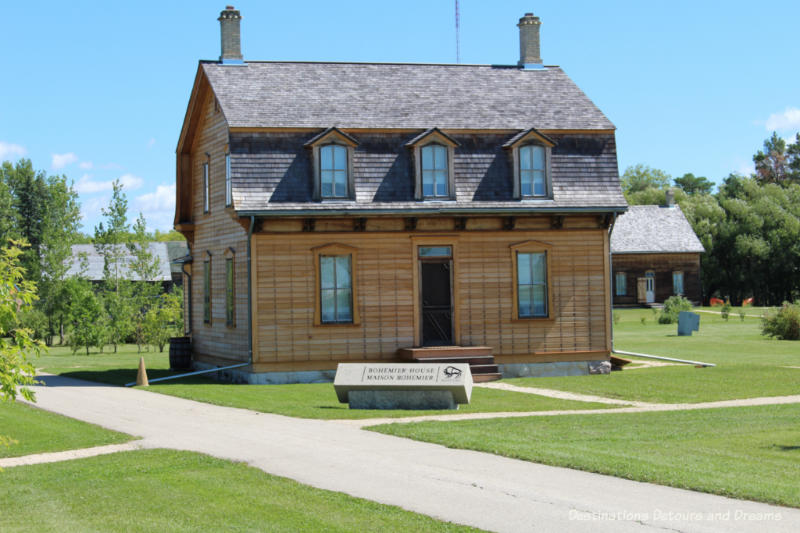
The St. Norbert Provincial Heritage Park is open daily during the summer, but guided tours of the interiors of Turenne and Bohémier houses occur only at specific times. Check the Manitoba parks site for hours.
Seven Oaks House Museum
Seven Oaks House Museum is a two-storey log building constructed between 1851 and 1853. It was the former house of John Inkster, a prominent merchant and farmer. Decorated with family furnishings, including some handmade furniture, and other period pieces, the museum provides a glimpse into 19th century life in the Red River Colony. The rooms are quite large for the time. The museum has an authentic and personal feel.
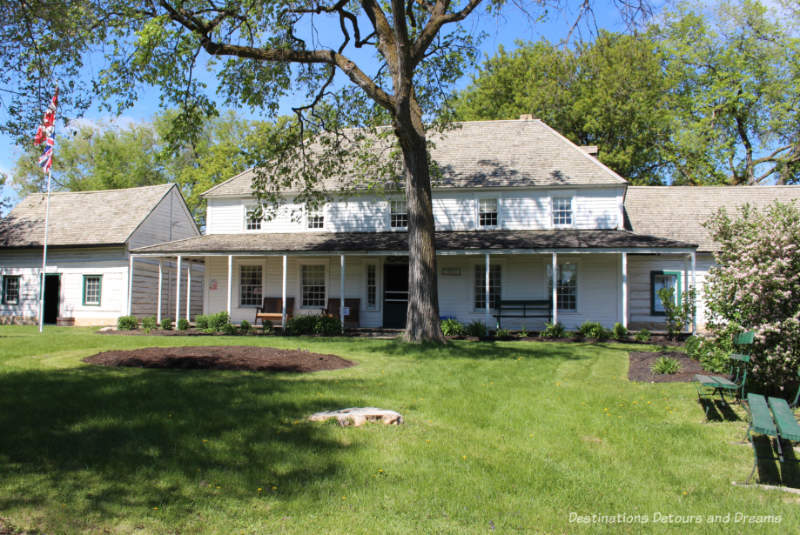
Seven Oaks House is a Provincial Heritage Site. Seven Oaks Museum is open 7 days a week seasonally from the May Victoria Day long weekend to Labour Day in early September. Admission is by donation with a recommended donation of $5. You can read more in my post about Seven Oaks House Museum.
Ross House
Ross House is one of the oldest homes in Winnipeg and served as the first official Post Office in Western Canada. The restored log home was built in 1854 for William and Jemima Ross, members of a prominent Métis family in the Red River Settlement. The house is small, but gives you a good sense of the time period.
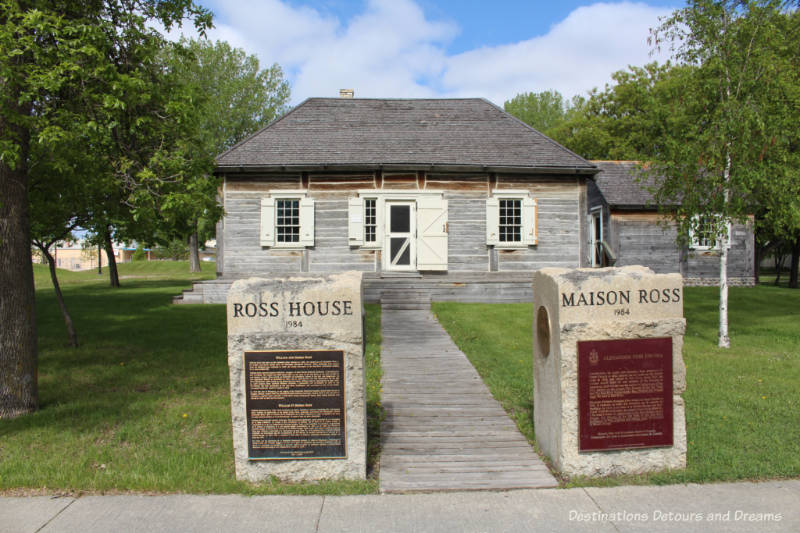
Ross House Museum is open seasonally Wednesdays through Sundays from the beginning of June to the end of August. Admission is by donation with a recommended donation of $5.
Grant’s Old Mill Museum
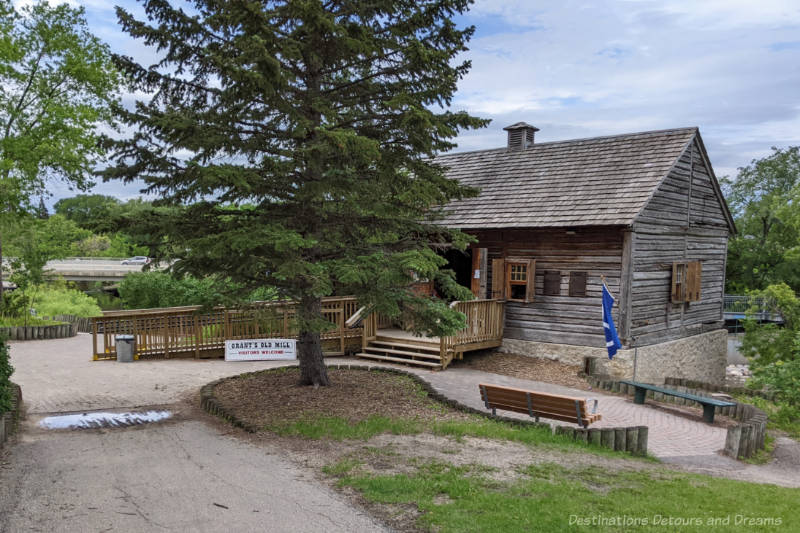
Grant’s Old Mill Museum is a replica of the first water mill in Western Canada built in 1829 by Cuthbert Grant to grind grain into flour. The working mill uses mill stones to demonstrate how wheat is ground into flour now and in the 1800s. Grant’s Mill is open from the May long weekend through to the end of August Tuesdays to Sundays.
La Maison des Artistes Visuels Francophones
The House of Francophone Visual Artists Inc. is an artist-run centre of contemporary art located in the St. Boniface area of Winnipeg. They stage various exhibitions in their contemporary art and maintain an outdoor sculpture gallery in the park beside the building on Provencher Avenue that served as St. Boniface’s City Hall for 70 years prior to St. Boniface amalgamating with the city of Winnipeg.
Plug In Institute of Contemporary Art
Located downtown, across the street from the Hudson’s Bay store and next to the Winnipeg Art Gallery, The Plug In Institute of Contemporary Art exhibits local and international contemporary art in all media. It looks at the definition of contemporary art, its function in community, and its social value. In addition to circulating exhibitions, Plug In supports art-making through research, publications, education, and advocacy. Plug In is open afternoons Tuesdays through Sundays. Check the website for exact times and holiday date closures. Note that the gallery is closed between exhibitions.
Salisbury House
At this point, Winnipeggers and people who know Winnipeg might say, “Wait a second. Salisbury House is a restaurant, not a museum.” And they would be correct, but there is a Tribute to Manitoba Music Museum at one of the Winnipeg diner chain’s locations. Display cases along two walls in the corner of the entrance area of the Salisbury House on Pembina Highway at Stafford Street are dedicated to Manitoba music. You’ll find instruments that belonged to well-known musicians, gold records, clippings, and photographs. The Tribute to Manitoba Music Museum is featured in my book 111 Places in Winnipeg That You Must Not Miss.
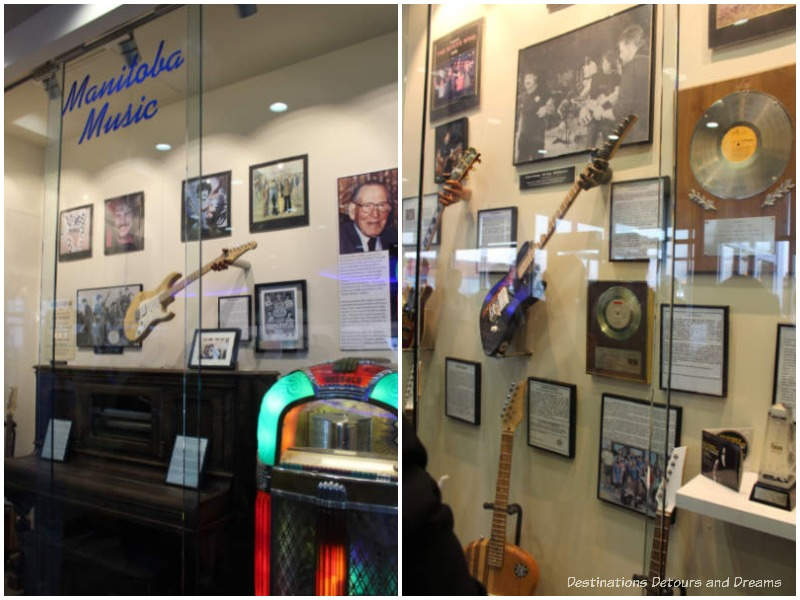
The Salisbury House on Pembina is daily from 6am to 11pm.
University Galleries
There are some free museums and galleries on Winnipeg’s university campuses.
Gallery 1C03 is the campus art gallery of the University of Winnipeg. It typically highlights the works of Manitoba and Canadian artists, but occasionally features international artists as well. It presents three to four exhibitions between September and April and sometimes does summer programming as well. When an exhibition is open, gallery hours are Monday to Friday from noon to 4:00 pm and Saturday from 1:00 to 4:00 pm.
The University of Manitoba’s School of Art Gallery exhibits contemporary and historical art. The gallery is open Monday to Friday from 10:00 am to 4:00 pm. It is closed on statutory holidays.
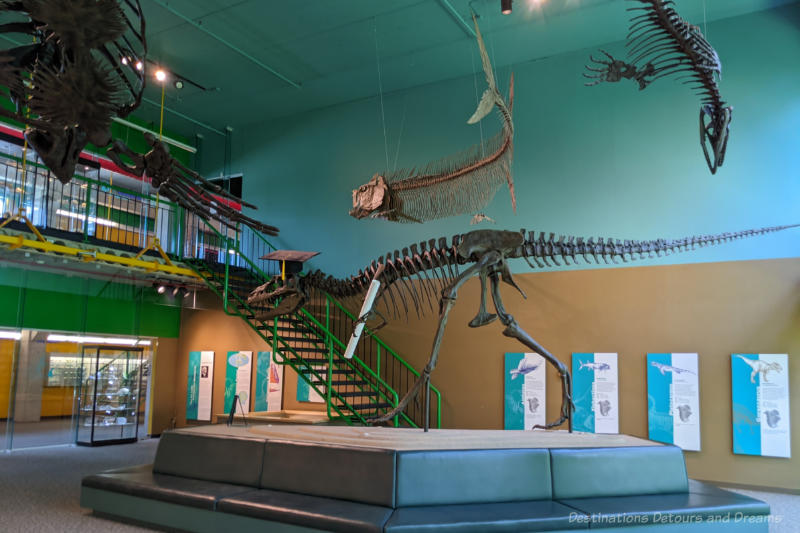
The University of Manitoba is also home to the Ed Leith Cretaceous Menagerie, which features skeletal replicas of four gigantic creatures from the Cretaceous Age 145 million to 65 million years ago. The adjacent Geological Sciences Museum contains fossils, minerals, and rocks. Both are open Mondays to Fridays from 8:30 am to 4:30 pm except for University holidays. The Geological Sciences Museum exhibit about Tyndall Stone is featured in my book 111 Places in Winnipeg That You Must Not Miss.
Costume Museum of Canada
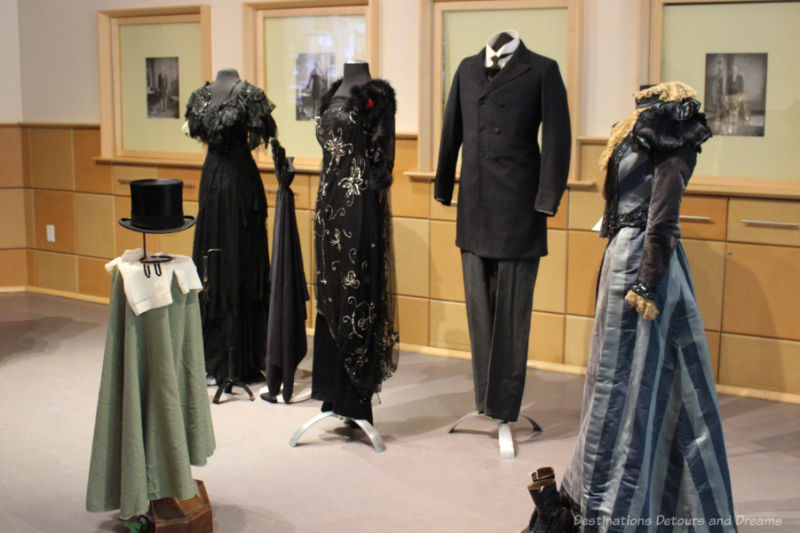
The Costume Museum of Canada celebrates the link between fashion, culture, and history through displays of Canadian costumes across the decades. The museum stages a variety of pop-up exhibits and has smaller exhibits on display in its office space. Visit the museum’s website to find out about any current and upcoming shows. For more information about the museum, read my post Fashion History At The Costume Museum of Canada.
Marion and Ed Vickar Jewish Museum of Western Canada
Located in a walkway in the Asper Jewish Community Campus (a community centre housing recreation facilities, a theatre, and several agencies), the Marion and Ed Vickar Jewish Museum of Western Canada reflects the social history of lives and events in the Jewish community over more than a century. Windows into large display cases along one wall contain displays in themed exhibits. One exhibit can run for years. A few of the past themes have been Jewish farm settlement, the garment industry, and the theatre. The opposite wall serves as a photographic gallery.
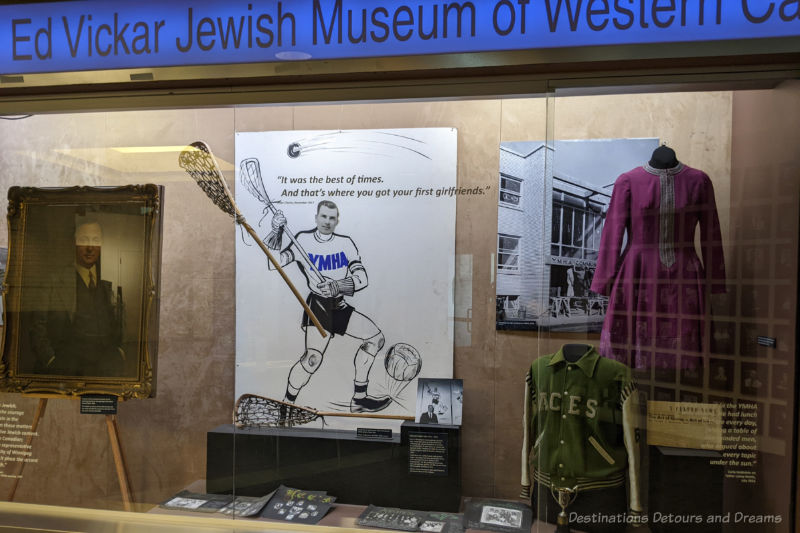
At the end of the walkway, boxcar-like doors, reminiscent of those that took so many to World War II concentration camps, open into the Freeman Family Foundation Holocaust Education Centre, where textual information, personal artifacts, photographs, and videos highlight the horrors of the Holocaust.
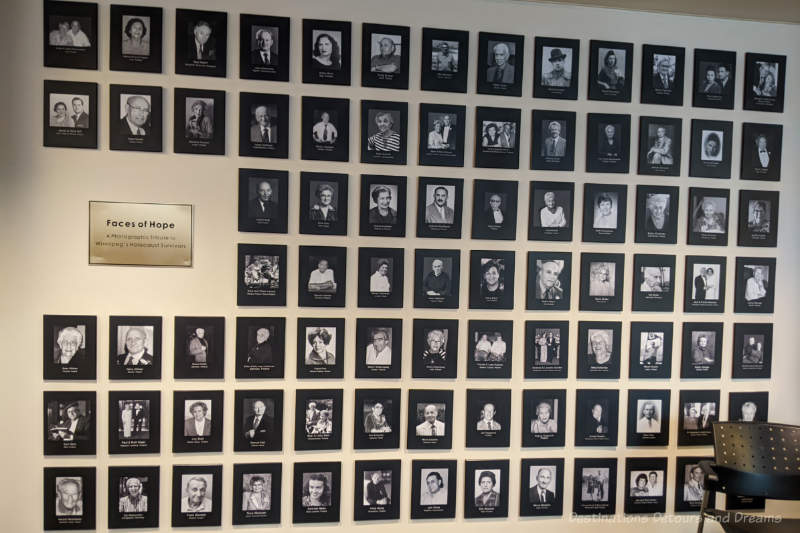
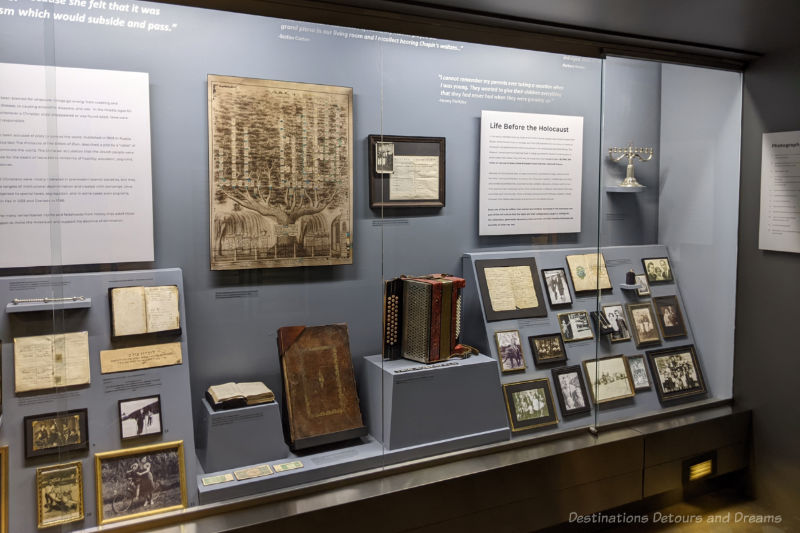
The museum is part of the Jewish Heritage Centre of Western Canada and is open the same hours as the Asper Jewish Community Campus. It is one of the places featured in my book 111 Places in Winnipeg That You Must Not Miss.
Never miss a story. Sign up for Destinations Detours and Dreams free monthly e-newsletter and receive behind-the-scenes information and sneak peaks ahead.
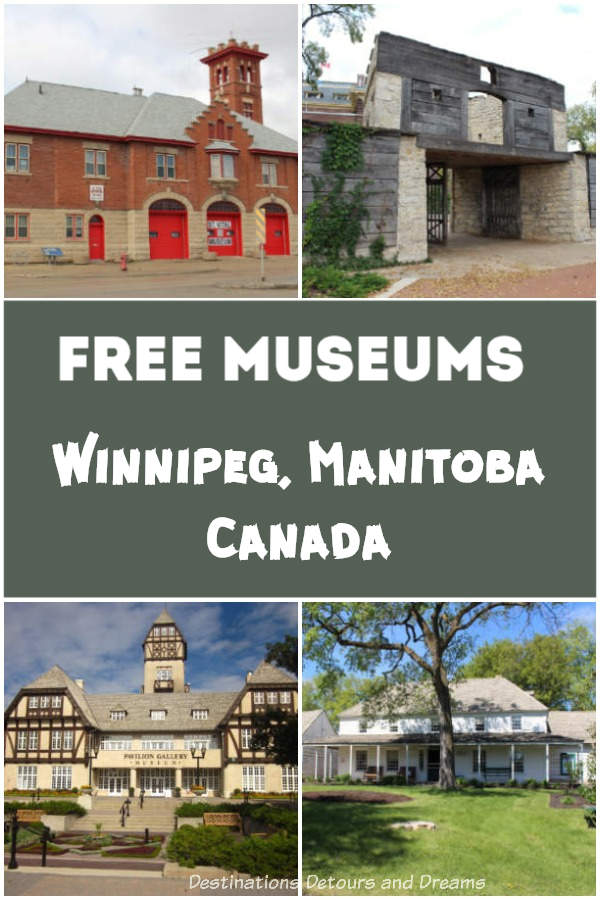

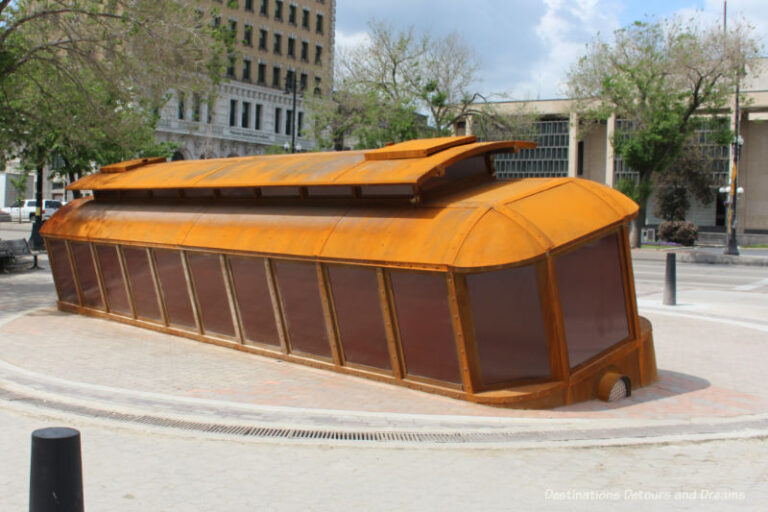
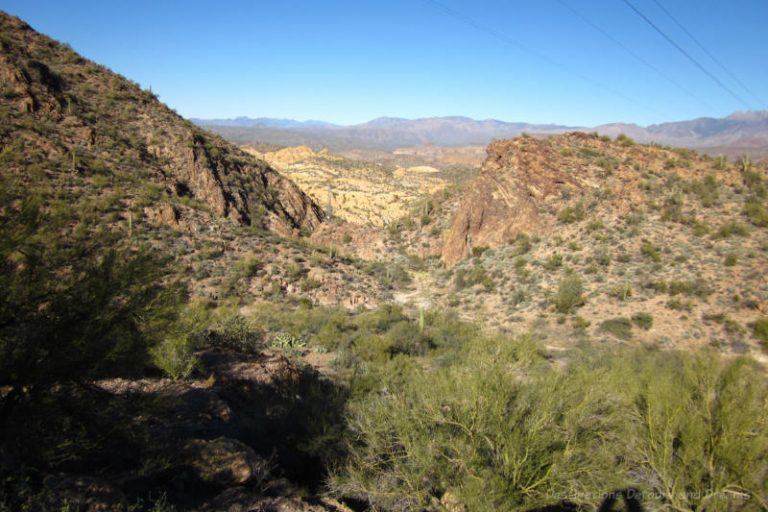
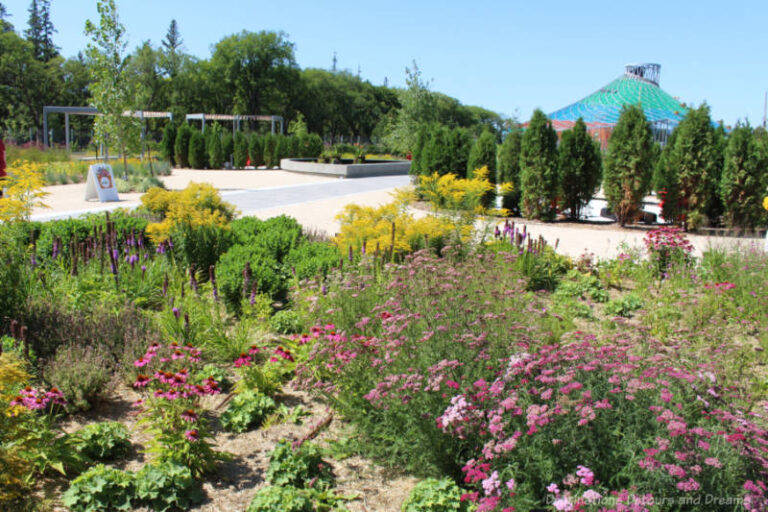
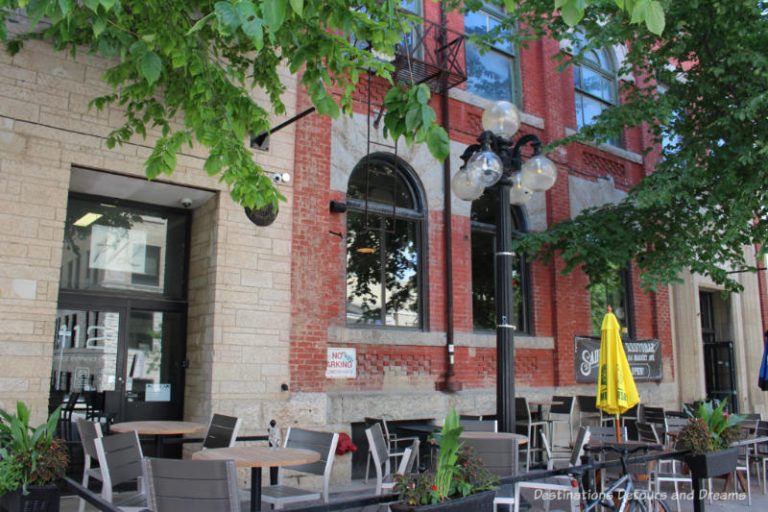
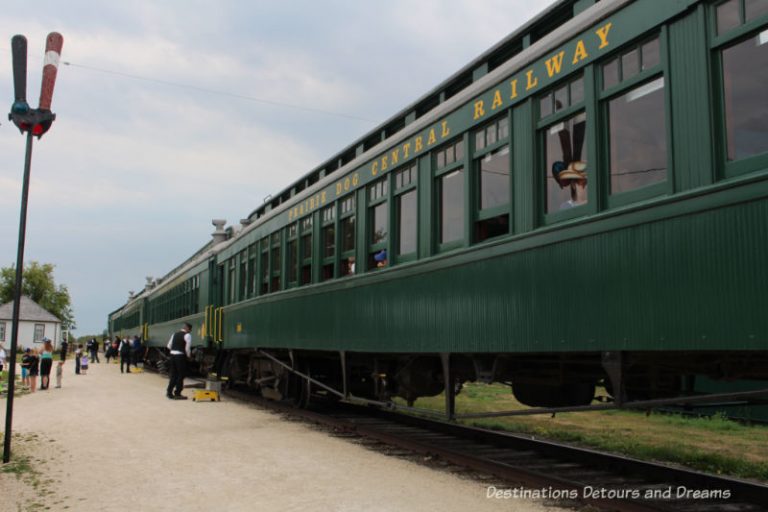
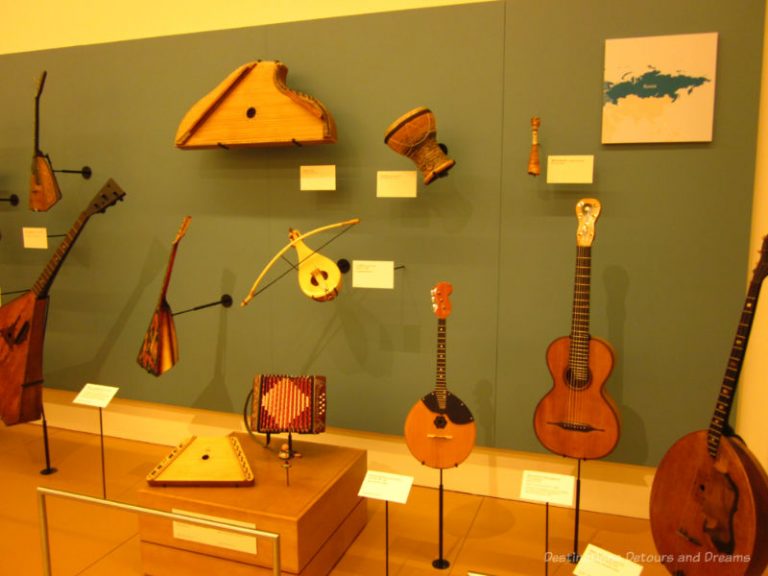
Pretty diverse collection of museums. When they are free I feel like you have the option of spending a lot of time and probably making a donation at the ones that capture your interest and conversely leaving after a few minutes when you’re not interested.
Ken, it is a diverse collection. Many of the smaller free museums in all places are interesting because they either focus on a niche area or are run by such passionate volunteers. Granted there are some that aren’t that good or focus on areas you may not have an interest in, but when you are interested, making a donation is great – it is often a struggle for these museums to survive financially.
There are a number o museums and galleries in Saint-Boniface such as Le musée de Saint-Boniface, La Galerie d’art au Centre culturel de Saint-Boniface ainsi que la galerie d’art à l’Université de Saint-Boniface, to name a few.
Hi Belle, thanks for responding with this information. I have written about Le Musée de Saint-Boniface in other posts (it is an excellent museum), but I didn’t include it in this list because it does not usually have free admission (although the fees are currently temporarily suspended). Similarly I did not include Fort Gibraltar or La Maison Gabrielle Roy in this list because they have entry fees, although I have written about both in other posts. However, La Galerie d’art au Centre culturel de Saint-Boniface belongs on the list and I will add it to the list. I am not familiar with la galerie d’art à l’Université de Saint-Boniface and will have to check that out. Thanks for bringing it to my attention.
under naval museum its mistakenly said the distance of wpg to the oceans….1200 and 1300 respectively approx.
Hi Mike. Thanks for catching some wildly inaccurate numbers. I think I know how I made that mistake, but I shouldn’t have. I have updated my post. By the way, I think the numbers of 1200 and 1300 you refer to are miles, not kilometres, Thanks again.